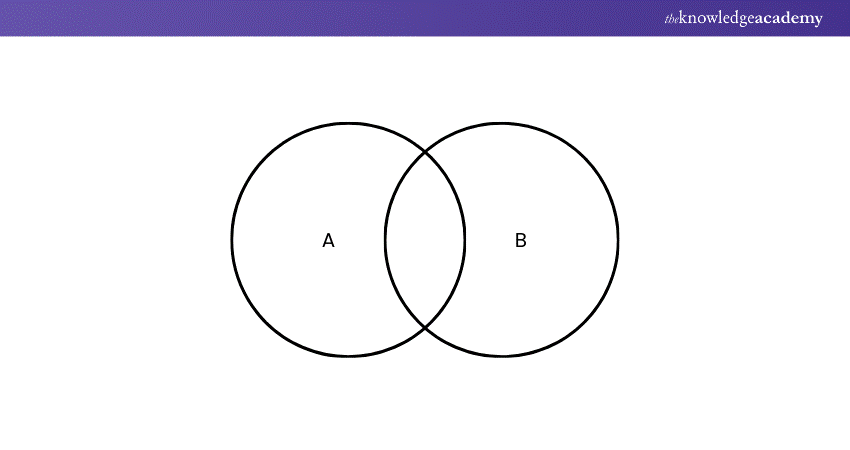We may not have the course you’re looking for. If you enquire or give us a call on 01344 203999 and speak to our training experts, we may still be able to help with your training requirements.
Training Outcomes Within Your Budget!
We ensure quality, budget-alignment, and timely delivery by our expert instructors.

Uncertainty is the biggest challenge for data analysts. With time, numerous mathematical concepts have evolved including probability which enabled these professionals to transform these uncertainties to valuable conclusions. Among those concepts lies a crucial cornerstone of data analysis—"Independent event in probability."
Continue diving into this blog to learn about what Independent Events are with respect to probability and the complexities associated with it. Let's begin this insightful data journey, turning them into valuable mathematical concepts on the way!
Table of Contents
1) What are Independent Events?
2) Venn Diagram for Independent Events
3) Calculating the Probability of Independent Events
4) Examples of Independent Events
5) Common Misconceptions
6) Conclusion
What are Independent Events?
Independent Events is the set of events which are independent of each other. This means that occurrence of one event will not impact the probability of occurrence of another event.
For instance, you flip a coin and roll a dice. Both events are independent, as the result of coin whether it heads or tails will not impact the result of rolling some dice, as one, two, three, four, five, and six.
Venn Diagram for Independent Events
The Venn diagram for independent events is described below:

The paths which are not overlapping are independent events, while the overlapping paths are dependent events; meaning the occurrence of A and B are dependent on each other. The square in which they are placed is the sample size.
Calculating the Probability of Independent Events
The formula for calculating independent event is,
P (A and B) = P(A) X P(B)
In this formula
a) P(A) is the probability of the occurrence of Event A
b) P(B) is the probability of occurrence of Event B.
c) P (A and B) is the probability of occurrence of both A and B.
Advance your data science skills with Predictive Analytics Training - join now!
Examples of Independent Events
As you are aware about Independent event in probability and the related mathematical formula. Let's now focus on some real-life examples to understand the topic better.
1) Example: If You Toss a Coin and Get "Heads" Three Times, What Is the Probability of Getting "Heads" On the Next Toss?
Sol: The results can happen while tossing a coin— heads or tails. It doesn't matter if it's coming heads or tails. So, if heads are coming in three instances, these three events are independent of each other. As a result, regardless of the outcome, the chances of getting "Heads" on the next toss are 1/2, or 50%.
2) Example: What Is the Probability of Getting "Heads" On A Coin Toss?
To find the probability of getting "Heads" on a coin toss is,
a) Number of Possible Outcomes: A fair coin can have two possible outcomes, one is "Heads", another one is "Tails."
b) Number of Favourable Outcomes: There is only one favourable outcome for getting "Heads."
c) Probability Calculation: The probability P is calculated using the below formula:
P (Event) = Number of Favourable Outcomes/ Number of Possible Outcomes
Applying this to our toss of the coin: P(Heads) = 1/2
So, the probability of getting ‘Heads” on a coin toss is 1/2 or 50%
3) Example: What Is the Probability of Rolling A "4" Or "6" On A Die?
To calculate the probability of rolling a "4" or a "6" on a die, here are steps mentioned below:
a) Number of Possible Outcomes: A standard die has 6 possible outcomes: 1, 2, 3, 4, 5, and 6.
b) Number of Favourable Outcomes: The favourable outcomes for this problem are rolling a "4" or a "6." Thus, there are two favourable outcomes in total.
c) Probability Calculation: The probability P of an event is calculated using the formula:
P (Event) = Number of Favourable Outcomes/ Number of Possible Outcomes
Applying this to our roll of the die: P (Rolling a “4” or “6”) =2 /6 =1/3
So, the probability of rolling a "4" or a "6" on a die is 1/3, which is approximately 33.33%.
Master advanced decision tree algorithms using Decision Tree Modelling Using R Training – sign now today!
Common Misconceptions
Some of the common misconceptions associated with independent event in probability listed below:
1) Misconception: Past Outcomes Affect Future Probabilities
a) Belief: Past outcomes influence future probabilities.
b) Example: Multiple “Heads” in coin tosses lead to a belief that “Heads” is less likely next.
c) Reality: Each coin toss is independent; probability of “Heads” remains 50% each time.
2) Misconception: Independent Events are Unrelated to Each Other
a) Belief: Independent events have no connection.
b) Example: Rolling a die and flipping a coin are independent but not unrelated.
c) Reality: Independence means one event’s outcome doesn’t affect the other’s probability.
3. Misconception: Independence Means Equally Likely Outcomes
a) Belief: Independent events have equal probabilities.
b) Example: Drawing an ace (1/13) and rolling a six (1/6) are independent but not equally likely.
c) Reality: Independence is about lack of influence, not equal probabilities.
4) Misconception: The Probability of Independent Events Always Multiplies
a) Belief: Probabilities of independent events always multiply.
b) Example: Coin flip and die roll probabilities multiply for combined outcomes.
c) Reality: Multiplication applies to combined outcomes, not individual event dependence.
Enhance Predictive Modelling using Data Science With R Training- register today!
Conclusion
We hope you understood this concept on "Independent event in probability. "Learning about independent event in probability can help students understand how outcomes do not influence one another and attain better comprehension about the probability theory topic.
Optimise data extraction with expert mining methods – sign up for ours Data Mining Training!
Frequently Asked Questions

Yes, independent events can have zero probability. For instance, if an event is impossible, its probability will be zero, but it still can be independent of other events with non-zero probabilities.

No, independent events are not necessarily mutually exclusive. Independence means that the occurrence of one event has no bearing on the occurrence of another, whereas mutual exclusivity means that the events cannot coexist.

The Knowledge Academy takes global learning to new heights, offering over 30,000 online courses across 490+ locations in 220 countries. This expansive reach ensures accessibility and convenience for learners worldwide.
Alongside our diverse Online Course Catalogue, encompassing 19 major categories, we go the extra mile by providing a plethora of free educational Online Resources like News updates, Blogs, videos, webinars, and interview questions. Tailoring learning experiences further, professionals can maximise value with customisable Course Bundles of TKA.

The Knowledge Academy’s Knowledge Pass, a prepaid voucher, adds another layer of flexibility, allowing course bookings over a 12-month period. Join us on a journey where education knows no bounds.

The Knowledge Academy offers various Data Science Courses, including Probability and Statistics for Data Science Training, Predictive Analytics Course, and Data Mining Training. These courses cater to different skill levels, providing comprehensive insights into Big Data vs Data Mining: A Comprehensive Guide.
Our Data, Analytics & AI Blogs cover a range of topics related to data science, machine learning, and artificial intelligence, offering valuable resources, best practices, and industry insights. Whether you are a beginner or looking to advance your analytical skills, The Knowledge Academy's diverse courses and informative blogs have got you covered.
Upcoming Data, Analytics & AI Resources Batches & Dates
Date
 Probability and Statistics for Data Science Training
Probability and Statistics for Data Science Training
Thu 28th Nov 2024
Thu 13th Feb 2025
Thu 10th Apr 2025
Thu 12th Jun 2025
Thu 14th Aug 2025
Thu 9th Oct 2025
Thu 11th Dec 2025







 Top Rated Course
Top Rated Course



 If you wish to make any changes to your course, please
If you wish to make any changes to your course, please


